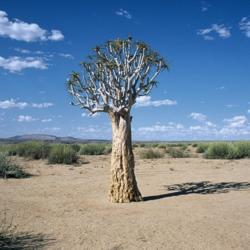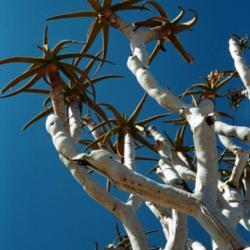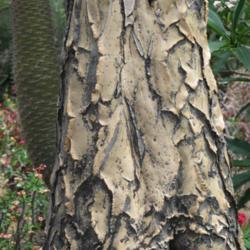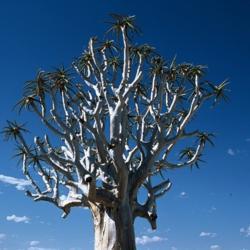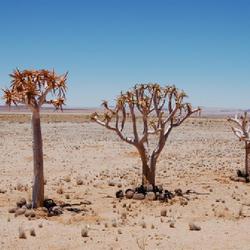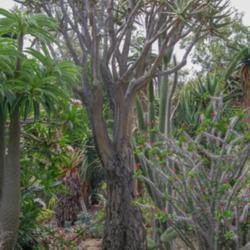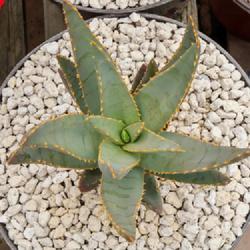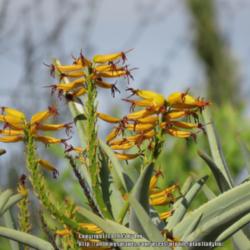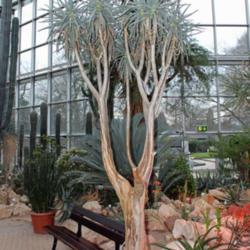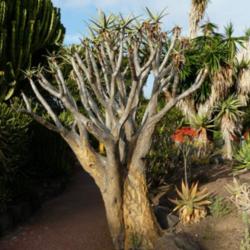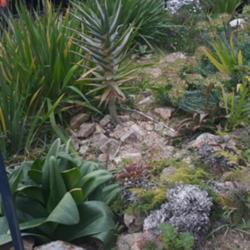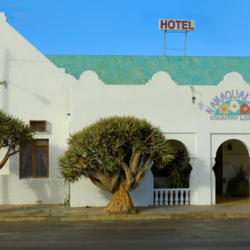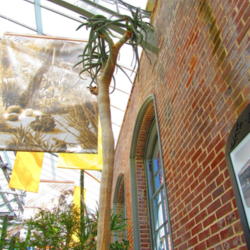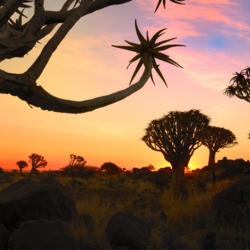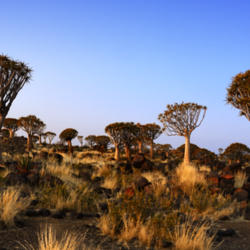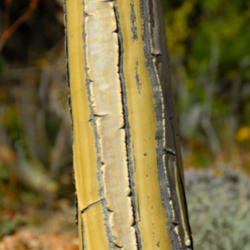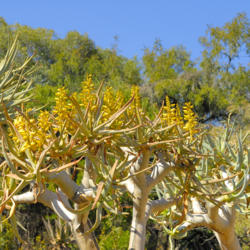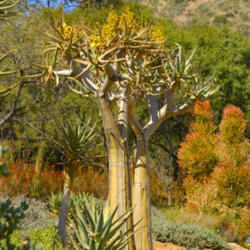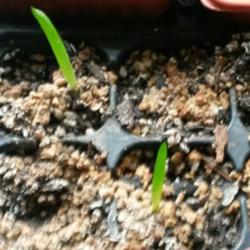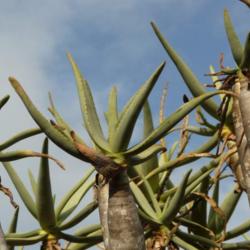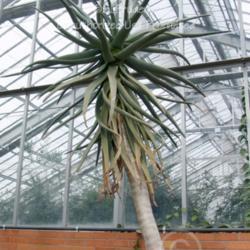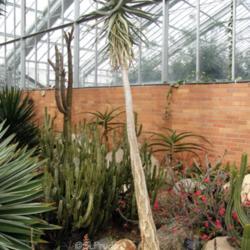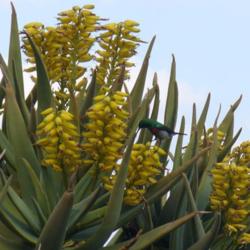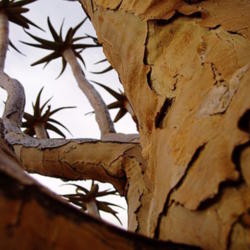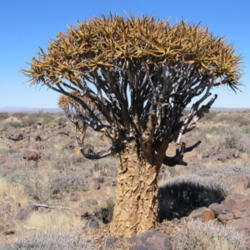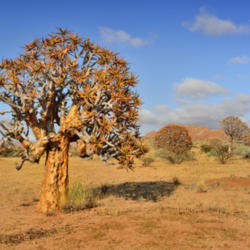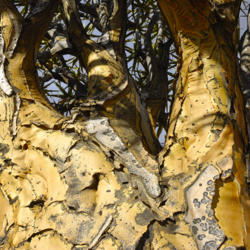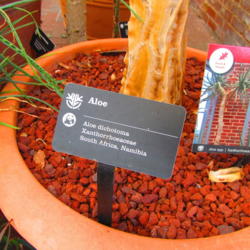Posted by
Baja_Costero (Baja California - Zone 11b) on Mar 17, 2018 10:39 AM concerning plant:
Large, fat, slow-growing tree aloe from a very harsh and dry winter rainfall area in northwestern South Africa, extending into Namibia. Trunk has a rough, irregular texture. This tree may reach close to 30 feet tall after many decades. It branches regularly and dichotomously (by division of the rosettes at the crown) once the stem has reached a certain height, giving rise to a dense, rounded canopy. Flowers are bright yellow, ventricose (with a little belly), and appear on upright inflorescences at the tops of the rosettes with exserted stamens and style. They are pollinated by weavers, sunbirds, white-eyes, and starlings in habitat, where the branches are often host to weaver nests.
Best suited to dry winter-rainfall (Mediterranean) climates like southern California. Refractory to summer water. Do not overwater during summer. Limited summer rainfall may be tolerated by landscape plants with excellent drainage; potted plants may do best with minimum summer water. Landscape plants develop the best form when grown in full sun without any supplemental water, once they are established. Provide excellent drainage in containers and in the ground.
Related to two other tree aloes from the same area, A. ramossisimum and A. pillansii, which are generally similar but can be resolved by differences in form and flowers. A. ramosissimum (which has at times been considered synonymous with dichotomum) is a shorter, bushier plant to about 10 feet with many branches starting close to the base. The very rare A. pillansii may be slightly taller than dichotomum but it branches much less, and its inflorescences are horizontal or pendulous, produced from leaf axils lower in the rosette.
This aloe was recently moved along with a few other tree aloes to a separate genus (Aloidendron) because they were determined by molecular studies to be closely related to each other, and distinct from Aloe. It will be found in publications more than a few years old as Aloe dichotoma. It appeared on the Namibian 50 cent coin. It is one of the parents (with A. barberae) of "Hercules", a faster and much less touchy hybrid which favors the dichotomum parent when grown on the dry side. Threatened by climate change.
